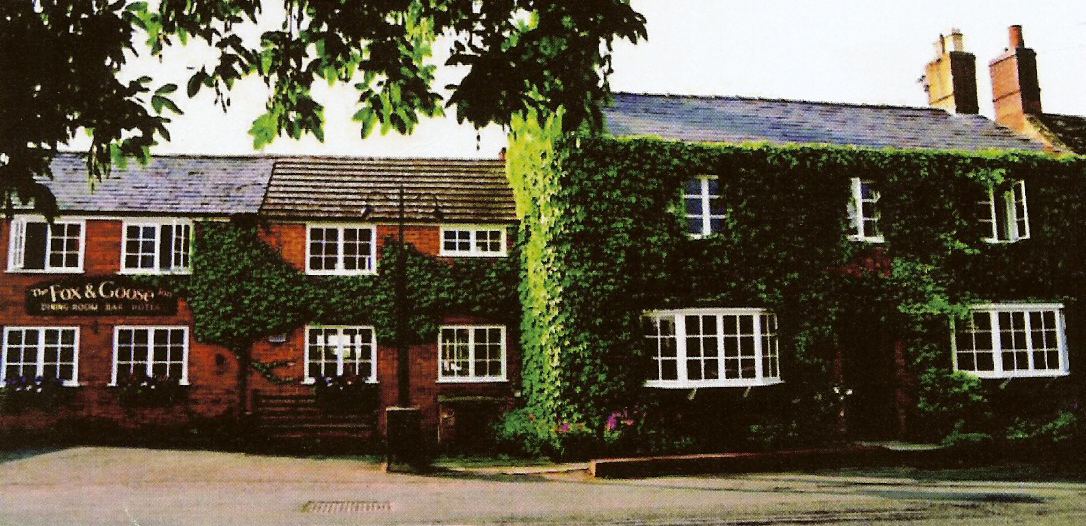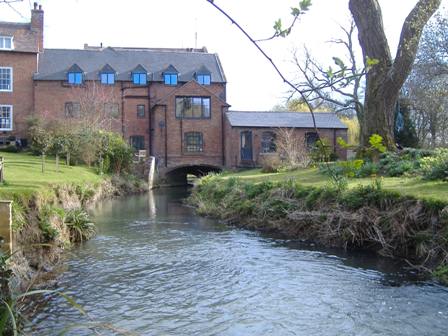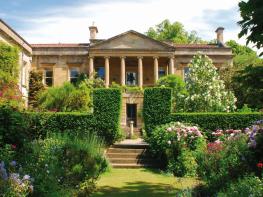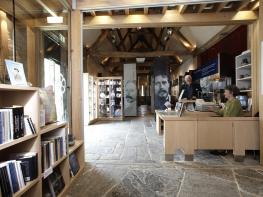Tredington Mill is an 18th-century water mill in the quiet Warwickshire village of Tredington,…
Honington and the Centenary Way

7.5 miles (12.1kms)
About the walk
Hidden down country lanes and surrounded by peaceful countryside, Honington must one of the most exquisite villages in Warwickshire. Exploring it on foot reveals a picture-perfect representation of rural England, with rows of handsome houses and charming cottages built of Cotswold stone and ironstone. It comes as no surprise to learn that Honington has won countless best-kept village awards over the years. Completing the picture is the imposing Honington Hall, glimpsed across the fields in the early stages of this walk. It is open to groups of visitors – up to ten -by prior appointment only. The house has been described as lying ‘in a lost landscape where the Cotswolds peter out yet the Midlands has yet to begin. Here England momentarily loses a sense of direction.’
Tall chimneys and Roman emperors
Honington Hall dates back to the late 17th-century. Situated on the banks of the River Stour, amid 15 acres of land, the house was built by Sir Henry Parker, a London lawyer. In 1737 the estate passed to the Townsend family who carried out significant changes and alterations. The work included the creation of a great octagonal saloon, completed in 1751. Here you find classical doorways crowned with cherubs and set against blue wall panels. Above is a semi-dome, which soars to a painting of Acis and Galatea by Luca Giordano. Round-headed niches can be seen over the ground floor windows of the east front, containing busts of Roman emperors. Boasting tall chimneys, the mellow brick Caroline manor house has been described as the perfect model for a doll’s house.
Unpleasant cherub
The BBC filmed Love in a Cold Climate, Our Mutual Friend and Martin Chuzzlewit at the house. At the foot of the drive can be found Honington’s church of All Saints. Apart from a 13th century tower, it was built around 1680 in classical style. Arthur Mee, in his renowned guides to the English shires, was less than flattering about the church’s marble monument to Joseph Townsend, referring to ‘perhaps the most unpleasant cherub in all England.’
Walk directions
From Honington’s parish church of All Saints walk back down the road, through the village. At the junction turn left, pass one of the entrances to Honington Hall on the left and a turning for Barcheston and Willington on the right. Take the next left turning (signposted Halford) and follow the quiet country lane for about 1 mile (1.6km), passing Granby Farm and Wagtail Spinney. Cross the Wagtail Brook, go through a gate on the right to join a bridleway and follow Shakespeare’s Way with the brook to your right. Keep to the right of a wood and along the edge of a large field. Pass into the next pasture via a gate and continue almost to the corner.
Go right to cross a footbridge, then bear left round the woodland edge. At the top keep left along the field perimeter. Pass to the left of several barns, cross a farm track and keep to the bridleway as it runs southeast along the field edge. Follow an enclosed path, go through a gate and pass the buildings of Idlicote to reach Idlicote House. Visit the church, then return to where the drive bends, keep ahead for several paces, then turn right by some white gates. Follow the bridleway down an elongated field to the road.
Turn left, pass a turning to Idlicote and when you reach some barns and outbuildings, go over a stile on the right, make for a gate to the left of a corrugated barn, cross a stile and footbridge and turn right. Walk along the field edge for about 100yds (91m) and at the waymark turn left to cross farmland. Pass through hedge on the far side, turn right for about 50yds (46m), then left across the middle of the field. Go through a hedge gap, over a stream and then across farmland, keeping to the left of the church tower at Whatcote. Follow the enclosed path to the road, go diagonally right to enter the churchyard and make for a wrought-iron kissing gate in the corner, joining the route of the Centenary Way.
Pass through a second gate immediately and turn right, down the field. Cross a stile and turn right, then left along the field boundary. Make for the corner and continue up the gentle slope beside woodland to the next stile. Continue on an enclosed path to the next stile, turn left after several paces to follow field boundary, with trees on the left. Veer away from the woodland, ascending to a farm road on a bend. Turn left, following the Centenary Way to Idlicote Hill Farm.
Turn right south of the farm buildings and follow the obvious grassy track, which is well waymarked. On reaching the fence corner by trees, keep right. When the track forks by a pond, keep left. Bear right to a crucial junction, turning left at the waymark. After 50 yds (46m), at the next sign, turn right and stay on the track until eventually you come down an open field to a T-junction. Turn right and follow the track to Honington. At the road turn right, left at the T-junction and return to the church parking area.
Additional information
Field paths, tracks, quiet roads
Pleasantly undulating fields
On lead on country roads and across open farmland
OS Explorer 205 Stratford-upon-Avon & Evesham
Honington, in the vicinity of the parish church
None on route
WALKING IN SAFETY
Read our tips to look after yourself and the environment when following this walk.
Find out more
Also in the area
About the area
Discover Warwickshire
The sparkle of sunlight on a gentle river as it meanders through beautiful countryside; the reflections of sailing boats on a lake; relaxing with a pint in the garden of an old English pub in a picturesque village; brightly coloured narrow boats making their way through a flight of lock gates; the imposing silhouette of an historic castle. These are the scenes that make Warwickshire a delight.
There may be few seriously high hills in this fertile plain, but it is an area full of attractive walking in rolling countryside, blessed with a fascinating history and wonderful places and buildings to visit. This is Shakespeare’s county, and the footprint of the famous Bard appears almost everywhere. He was born and brought up around the beautiful Warwickshire town of Stratford-upon-Avon, and many of his plays draw upon his own experiences in the area.
Warwickshire has a history that embraces the Civil War, castles and large country houses are scattered over the county. Warwick Castle is the home of the Earl of Warwick, Kenilworth Castle was a stronghold for lords and kings of England in the 11th and 12th centuries, and so the list goes on.
Nearby stays
Restaurants and Pubs
Nearby experiences
Recommended things to do
Why choose Rated Trips?
Your trusted guide to rated places across the UK
The best coverage
Discover more than 15,000 professionally rated places to stay, eat and visit from across the UK and Ireland.
Quality assured
Choose a place to stay safe in the knowledge that it has been expertly assessed by trained assessors.
Plan your next trip
Search by location or the type of place you're visiting to find your next ideal holiday experience.
Travel inspiration
Read our articles, city guides and recommended things to do for inspiration. We're here to help you explore the UK.













